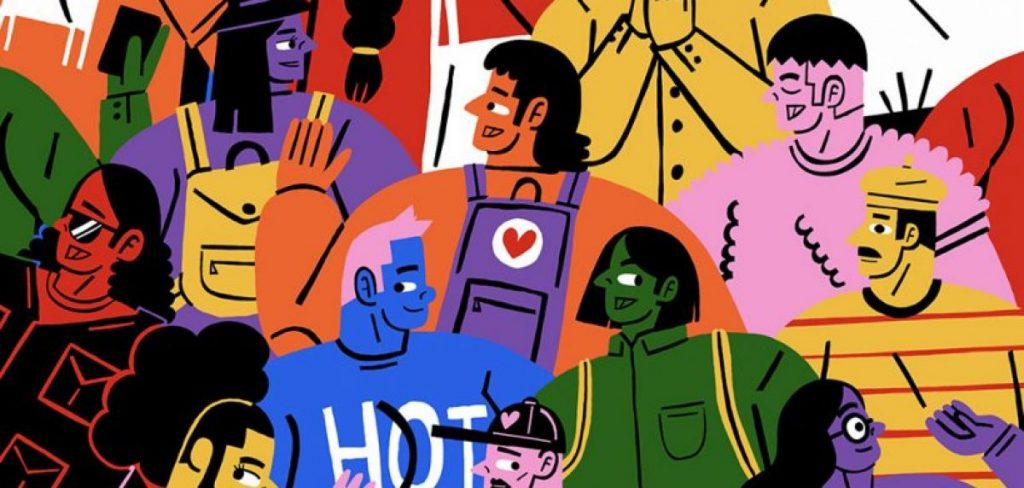Intro:
On the BA and MA Illustration courses at Camberwell College of Arts I have the opportunity to deliver my own workshops. Drawing from my own practice and expertise by inviting students to try new methods of engaging with illustration.
Evaluation/Goal:
This role presents the following challenges:
- High number of students that need to make use of translation software to partake in workshops and tutorials.
- Sound pollution from other classes due to open plan studio setting. Sometimes 3-4 happening at the same time in close proximity of one another.
To address these issues, I have made the following action plan:
Lesson Instructions in text:
All students will be sent an email 2-3 days ahead of the lesson. This email should contain links to access the following resource:
1: Access information about the space we will be teaching in:
- be transparent about issues around audio levels and possible sensory overload.
- Be welcome to the idea of people bringing fidget toys, noise cancelling headphones and other tools for support.
2: Workshop slides and written instructions for the workshop:
- Instructions will be clearly labelled with the same steps and order used in the slides.
- Make it clear that this is ok to use translation software and that printed copies will be available on the day for all students.
These small steps will help students to better prepare for the teaching environment.

(examples of Fidget toys that students use.)
Facing students when talking:
A crucial step when working with students with impaired hearing who might be making use of lip reading is to face them when talking.
- I will be aware of where I am facing and pause any instruction in case, I need to look something up behind a computer screen.
- If possible, it is also good to make use of closed caption software and screens that can be viewed by all participants.
Culturally Relevant References:

Illustration used in the article: Breaking language barriers: supporting non-native English-speaking students (Liu, Wang, Wang, 2022).
To better connect students across language barriers, I find it is effective to make use of references that reflect multicultural perspectives (Liu, Wang, Wang, 2022).
If planning allows it, I will email students with 2 weeks’ notice and ask them for suggestions on artists to look at in relation to the topic and/or method of your workshop.
This will help establish a stronger sense of co-teaching between students and teachers.
Overcoming Sensory Overload:
When starting a lesson, I will address the state of the room and whatever potential disruptions you can notice on the day, ask students to partake.
I will establish a code of conduct that allows students to move in and out of the space as they please, if they are there for the sections where I will be instructing new tasks, group sharing or presenting references and context for the lesson.
This allows students to feel empowered to take action in cases of sensory overload.
Bibliography:
THE Campus Learn, Share, Connect (2024) ‘Breaking language barriers: supporting non-native English-speaking students,’ 1 October. https://www.timeshighereducation.com/campus/breaking-language-barriers-supporting-nonnative-englishspeaking-students.
Speks. (n.d.). What Are Fidget Toys and Where Did They Come From? [online] Available at: https://www.getspeks.com/blogs/speksed/what-are-fidget-toys-and-where-did-they-come-from.
